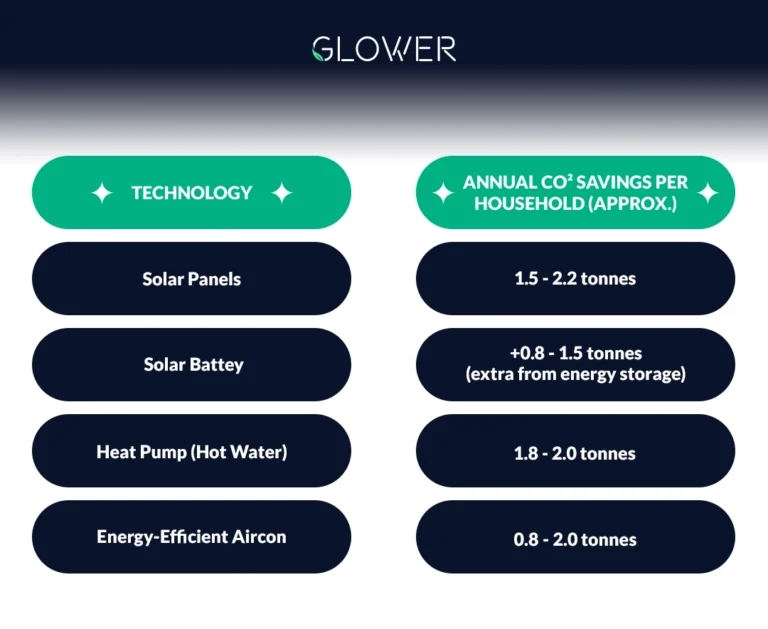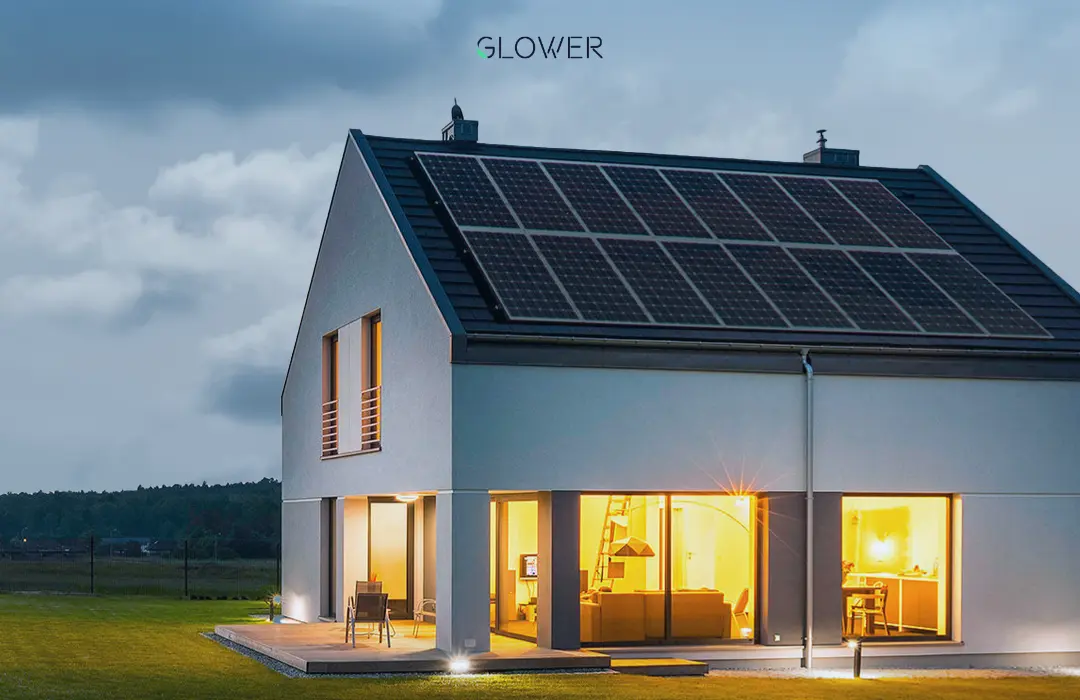In July 2025, our customers have already prevented 5,875 tonnes of CO₂ from entering the atmosphere, and the month’s not even over yet. These efforts are key to achieving net zero emissions in the region and building a low carbon liquid fuel industry.
This is a massive milestone for the growth of clean technologies like solar panels, solar batteries, heat pumps and efficient air conditioning systems across Victoria and New South Wales, all installed with Glower.
So what does 5,875 tonnes of CO₂ mean? How much can you save at home? Which tech makes the biggest difference?
Let’s break it down.
How much CO₂ can a home save with clean energy?
Switching to clean energy helps the planet and your home, with real, measurable carbon savings and cost savings for households. Here’s what households can expect to save annually:

Figures vary based on household size, solar exposure, usage habits and system capacity but even small changes can save households several cents per kilowatt-hour, resulting in significant annual savings.
Bonus tip: Pairing solar panels with a solar battery means storing excess energy during the day and using it at night, reducing grid reliance and emissions even more.
What tech saves the most CO₂ in winter?
Winter is when energy use – and emissions – spike in Australian homes. But some tech helps reduce that impact more:
🔥 Heat Pumps: Efficient even in cooler weather, perfect for hot water.
☀️Solar + Battery: While solar generation drops in winter, a battery means you still use clean energy after sunset.
❄️ Efficient Aircon: Modern systems with zoning reduce wasted energy.
Installing modern infrastructure like solar batteries and heat pumps improves the operation of home energy systems by increasing efficiency and supporting sustainable energy use.
Winter Combo: A solar + battery system plus a heat pump delivers some of the highest CO₂ savings in winter. Adding an electric vehicle to your household energy mix can save even more CO₂ in winter.
Compare your household’s carbon impact
Curious how much CO₂ your home could save?
Here’s an example from one of our customers in Victoria:So that’s 1.26 tonnes of CO₂ avoided in just 3 months. If we extrapolate that over a full year:

That’s over 5 tonnes of CO₂ saved annually, which is equivalent to the CO₂-equivalent emissions from driving a typical passenger car for more than 20,000 km.
It’s proof that one clean energy upgrade – in this case, solar – can have a huge impact, especially when paired with smart usage and energy awareness.
These household projects not only reduce emissions but also offset the community’s overall carbon footprint, contributing to broader sustainability goals.
Want to estimate your home’s potential?
Use this calculator or get a personalised quote with Glower.
What rebates are available in 2025 to help you cut emissions?
There are generous rebates in Victoria and NSW to help you switch to cleaner tech:
These government initiatives are designed to stimulate the clean energy market, making it easier and more affordable for households and businesses to adopt sustainable technologies.
These programs can cover up to 80% of your upgrade costs, depending on eligibility.
July snapshot: What does 5,875 tonnes of CO₂ saved look like?
To put this into perspective, saving 5,875 tonnes of CO₂ is like:
🪴Planting over 243,000 trees
🚗 Removing more than 1,270 cars from the road for a year
✈️ Cancelling over 9,700 one-way flights from Melbourne to Sydney
These savings reduce reliance on fossil fuels and support the region’s net zero emissions targets, especially in the transport sector.
Each solar panel, battery, heat pump and aircon installed with Glower contributes to a cleaner, healthier and more sustainable Australia.
FAQs: Reducing your CO₂ at home
- Q: How do solar batteries reduce CO₂?
A: By storing your excess solar energy and using it later, batteries reduce how much electricity you draw from the grid – lowering emissions especially during peak hours.
- Q: Are heat pumps effective in winter in VIC or NSW?
A: Yes! Modern heat pumps are highly efficient even in colder climates.
- Q: Is upgrading my aircon really worth it for CO₂ savings?
A: Yes. Replacing an old split system with a modern, energy-efficient reverse-cycle aircon can cut your cooling and heating emissions by up to 40% – especially when combined with zoning, smart thermostats and off-peak use.
- Q: Can I install solar and battery at the same time?
A: Yes – it’s one of the most popular and effective combos for homeowners in 2025.
Get started today
We’ll show you how much CO₂ your home could save, and help you get the best rebates for your home.





